In-Depth with Mac OS X Lion Server
by Andrew Cunningham on August 2, 2011 8:00 AM ESTA directory isn’t much good to anyone without any objects in it, so we’re going to create a few users and groups to test things out. As with creating a directory, there are a couple of different ways to do it.
In Server.app: Use the plus sign to add new users in the Users section - you can enter their full name, email address, and desired password here, which covers most of the account basics.
Directory accounts (as opposed to accounts local to your server) will appear with a circular blue globe icon next to their names.
Clicking the gear icon will allow you to edit the user’s properties (including the full name, email address, whether he or she can administer the server, and group membership - the user’s short name isn’t changeable after it’s set), as well as edit the services that user can use (making it easy to keep, say, mail or VPN access off-limits to guest users).
Start Workgroup Manager and authenticate using the Directory Administrator privileges you specified when you created your directory. The window you’ll see is a bit scarier than what you get in Server.app.
The four tabs above the left-hand column are for users, user groups, computers, and computer groups - if you made some users or user groups in Server.app before, they’ll show up here, too, and you can enter a lot more info in Workgroup Manager than in Server.app. There’s too much to go into in a general review, but this screenshot will give you an example of the detail you can go into:
The main thing you can do with Workgroup Manager that you can’t do with Server.app is manage OS X preferences - everything from the icons in the Dock to what applications your users are allowed to launch. If you select a user or group or other entry, you can click the Preferences button to see all of your options.
Settings in here are roughly analogous to those in System Preferences in any ol’ Mac.
Workgroup Manager is a powerful tool for managing users and settings, but like many of the other longtime OS X Server standbys, it’s on the road to being deprecated. The preferences managed in Workgroup Manager are mostly to be used for Macs running pre-Lion versions of OS X. Lion (and also iOS) clients are best managed with a tool new to Lion Server: Profile Manager.
Directory accounts (as opposed to accounts local to your server) will appear with a circular blue globe icon next to their names.
Clicking the gear icon will allow you to edit the user’s properties (including the full name, email address, whether he or she can administer the server, and group membership - the user’s short name isn’t changeable after it’s set), as well as edit the services that user can use (making it easy to keep, say, mail or VPN access off-limits to guest users).
Editing a user
Controlling access to services
Under the Groups header, you can create and modify your groups and their memberships. If you’re running the Wiki or iChat services, you can make group-specific wikis and make group members appear automatically on each others’ buddy lists.
The second, more advanced way to edit users and groups is to use Workgroup Manager, another of the Server Admin Tools. Like Server Admin, this used to be the go-to tool for managing not just users and user groups, but also computers and computer groups - managing settings on a computer or computer group basis can be useful if you’ve got web kiosks or computer labs (for instance) that you want to act differently than standard workstations for users who log into them.Start Workgroup Manager and authenticate using the Directory Administrator privileges you specified when you created your directory. The window you’ll see is a bit scarier than what you get in Server.app.
The four tabs above the left-hand column are for users, user groups, computers, and computer groups - if you made some users or user groups in Server.app before, they’ll show up here, too, and you can enter a lot more info in Workgroup Manager than in Server.app. There’s too much to go into in a general review, but this screenshot will give you an example of the detail you can go into:
The main thing you can do with Workgroup Manager that you can’t do with Server.app is manage OS X preferences - everything from the icons in the Dock to what applications your users are allowed to launch. If you select a user or group or other entry, you can click the Preferences button to see all of your options.
Settings in here are roughly analogous to those in System Preferences in any ol’ Mac.
Workgroup Manager is a powerful tool for managing users and settings, but like many of the other longtime OS X Server standbys, it’s on the road to being deprecated. The preferences managed in Workgroup Manager are mostly to be used for Macs running pre-Lion versions of OS X. Lion (and also iOS) clients are best managed with a tool new to Lion Server: Profile Manager.


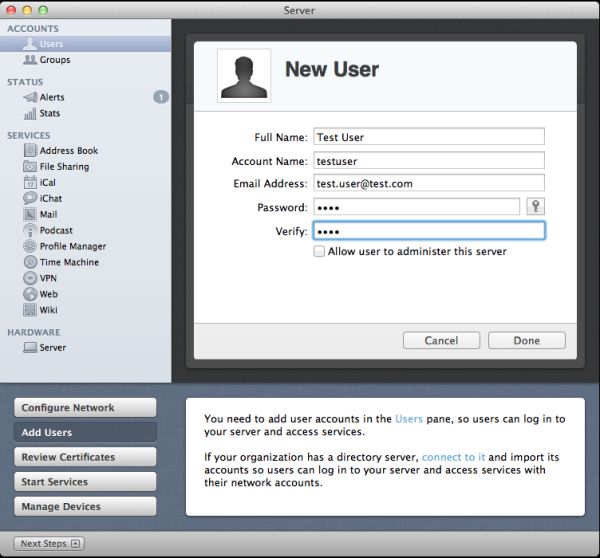
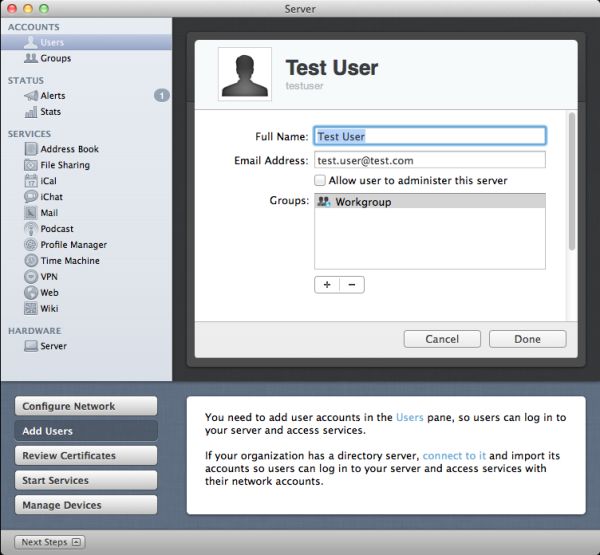
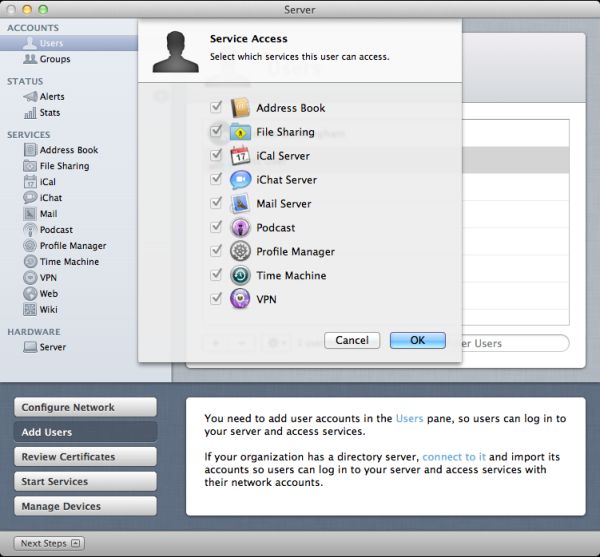
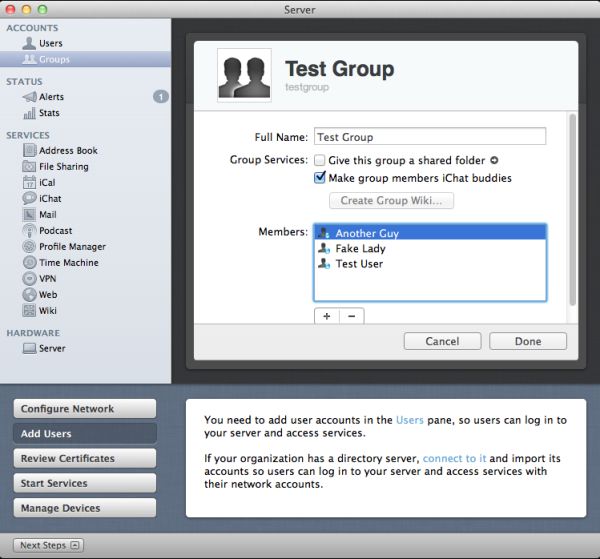
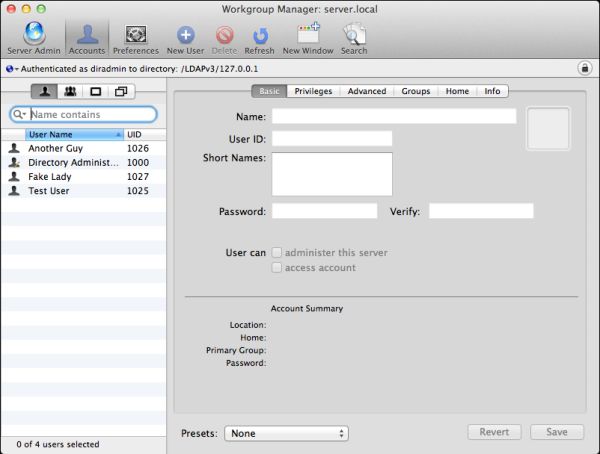
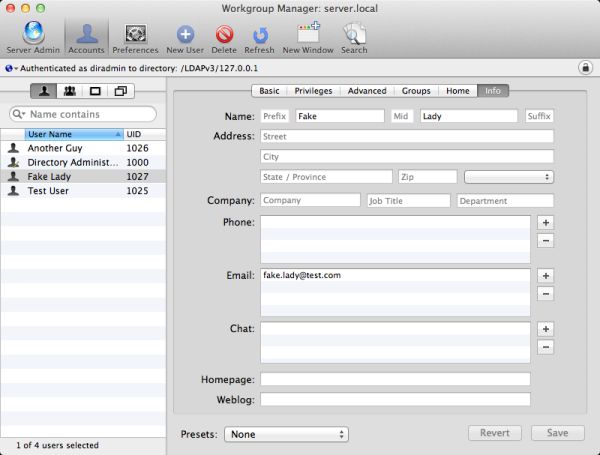
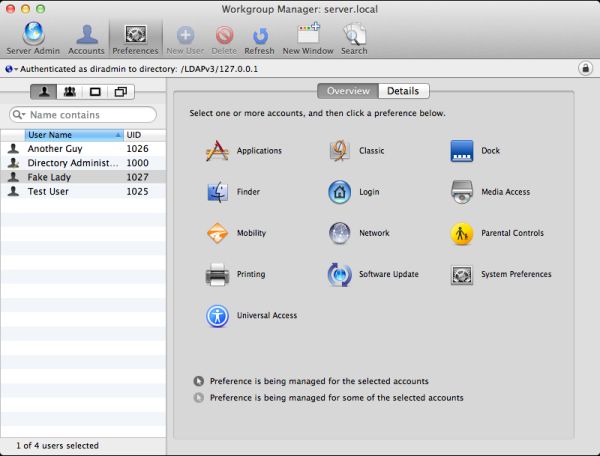








77 Comments
View All Comments
Wizzdo - Wednesday, August 3, 2011 - link
Lion's web server IS Apache. LOL.jigglywiggly - Tuesday, August 2, 2011 - link
I am too much of an elitist fag to succumb to this.I just installed my Debian GUI-less server today to replace my o'll ubuntu 10.04 LTS GUI server, got everyhting setup, mysql, apache, php, samba settings, everything gud to go with only 100 megs of ram usage.
Sure it took much longer to setup, but I am an elitist fag
don_k - Wednesday, August 3, 2011 - link
Since when is netboot unique to OSX server? Last I checked all *nix variants have had that ability for decades.But really, organisations concerned about the sticker price on their server software are not going to go get an apple 'server' for $1k when they can download an iso in 5min and get going are they?
Not to mention the complete lack of necessary system tools (archiving, compiing especially) without installing macports or something.
Call it like it is - 1k to manage all those damn pads and phones everyone in the company demands they are able to access the company intranet.
johnbouy - Wednesday, August 3, 2011 - link
Time Machine took a big step backwards with Lion Server. In Snow Leopard Server you could allow time machine backups on individual share points. This allows you to partition a disk and set up individual partitions for specific Time Machine backups. I use this to control how much disk space is allocated for a backup. In Lion you get to nominate one share point/partition as the Time Machine backup storage point. Hence any client that backs up to the server uses the same disk space. A real step backwards!Another issue is that Server.app rewets .config files when started up so you potentially lose any changes you were forced to make due to the lousy Lion Web service interface.
digitalzombie - Wednesday, August 3, 2011 - link
I like the idea but still... I wouldn't do it. Apparently they got desperate enough to offer it for 50 bucks. Good job for noticing that no one give a damn since Linux is free and both Linux and Window is established already. I still wouldn't give em my money when they tried to charge in the past an arm and a leg. Who the hell do they think they're going fool? The platform isn't the most active for server development tools. Linux got cloud all up in there and it's actively evolving in many area especially server. Don't even try to bring out that pathetic iCloud. It's not open so nothing is going to back that crap other than Apple, openstack have 50 vendors, big companies, backing that project up compare to iCloud. Apple probably won't ever be able to compete in the server sector but they can leverage their UI and simplicity for their user base, such as the gui sys admin tools described in this articles. They should just stick with consumer base products, trying to compete in the server space market is going to kill em.matthi - Wednesday, August 3, 2011 - link
On page 4 of this review, it says ".. our next entries are Accounts and Stats under the Status heading". 'Accounts' should be replaced with 'Alerts'.slayernine - Wednesday, August 3, 2011 - link
If only this was a review of Windows Server it might be useful. I have never met a fellow tech person/geek who uses any version of Apple Server products. (aside from one customer about 3 years ago who was curious about them).It is just the simple facts that apple products are know for a lack of an ability to upgrade, locked to features that Apple thinks you should have and a lack of price efficiency. Windows and Linux offer far superior server products that will run on pretty much any hardware that suits your needs and the only reason I can see there being a point to review this product is due to Apple padding your pockets.
Schafdog - Wednesday, August 3, 2011 - link
I know that it seems like Apple (or Steve) has lost faith in the PC as a hub, but I would really love seeing a iTunes Server that multiple users can control using iOS devices playing on Airplay or iOS device itself.Some NAS is now getting this features, so I might drop the OS X Server for one of those instead.
sodi - Wednesday, August 3, 2011 - link
What kind of crazy organization would use a Lion Server? At works, standard is a necessity. A Lion Server is just oddball.Oscarcharliezulu - Thursday, August 4, 2011 - link
This seems a bit like OSX Server Lite and Easy rather than a true upgrade to Snow Leopard Server. I wasPthinking of converting an older 'mini to Lion Server (to serve a small business which has MBPs and iMacs, but now I think getting a copy of Snow Leopard Server would be better if I could somehow get it cheap (yet legal).